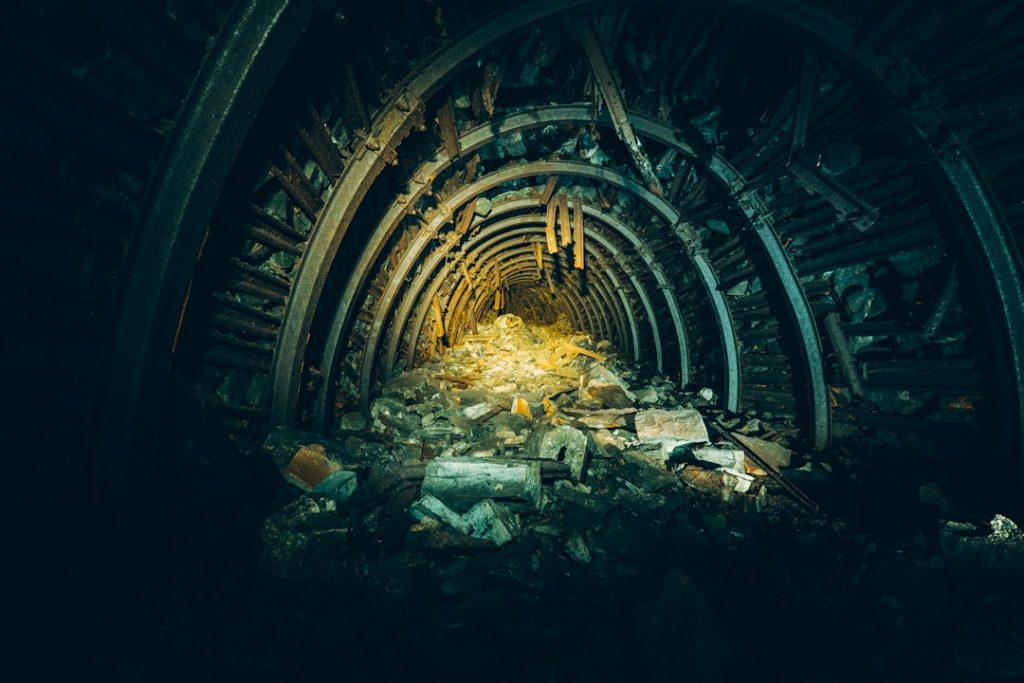Clean fuel technology encompasses alternative fuels and energy sources that produce fewer emissions and pollutants compared to conventional fossil fuels. This approach aims to reduce air pollution, enhance public health, and mitigate climate change impacts. Clean fuel technology includes renewable energy sources such as solar, wind, and hydroelectric power, as well as biofuels, hydrogen fuel cells, and electric vehicles.
The adoption of clean fuel technology is essential in addressing global environmental challenges caused by fossil fuel combustion. As the world’s population grows, increasing energy demand leads to higher levels of air pollution and greenhouse gas emissions. Clean fuel technology offers a sustainable solution to reduce the environmental impact of energy production and consumption.
This article will explore the current air pollution issues in Kabul, the benefits of clean fuel technology, its implementation in the city, and the challenges and obstacles in adopting this technology. Additionally, we will examine success stories and case studies of clean fuel technology in other cities and discuss the future outlook for clean fuel technology in Kabul.
Key Takeaways
- Clean fuel technology is a crucial solution for reducing air pollution and improving public health.
- Kabul is currently facing severe air pollution issues, with high levels of particulate matter and other harmful pollutants.
- Clean fuel technology can bring numerous benefits, including improved air quality, reduced health risks, and economic savings.
- The implementation of clean fuel technology in Kabul requires a multi-faceted approach, including policy changes, infrastructure development, and public awareness campaigns.
- Despite the potential benefits, challenges such as financial constraints, lack of infrastructure, and resistance to change pose significant obstacles to adopting clean fuel technology in Kabul.
Current Air Pollution Issues in Kabul
The Sources of Air Pollution
The city’s air quality is significantly impacted by the burning of fossil fuels for electricity generation, heating, and transportation. The use of low-quality diesel and gasoline in vehicles and generators contributes to high levels of particulate matter, nitrogen oxides, sulfur dioxide, and carbon monoxide in the atmosphere.
The Consequences of Air Pollution
The poor air quality in Kabul has serious implications for public health, with high rates of respiratory diseases, cardiovascular problems, and premature deaths attributed to air pollution. Children, the elderly, and individuals with pre-existing health conditions are particularly vulnerable to the adverse effects of poor air quality. Additionally, air pollution also has detrimental effects on the environment, leading to acid rain, smog formation, and damage to vegetation.
A Call to Action
Addressing the air pollution issues in Kabul requires urgent action to transition towards clean fuel technology and reduce the reliance on fossil fuels.
The Benefits of Clean Fuel Technology

Clean fuel technology offers a wide range of benefits for public health, the environment, and the economy. By transitioning to alternative fuels and renewable energy sources, cities like Kabul can significantly reduce air pollution and improve air quality. Clean fuel technology also helps to mitigate climate change by lowering greenhouse gas emissions and decreasing the reliance on finite fossil fuel reserves.
Additionally, the adoption of clean fuel technology can create new job opportunities in the renewable energy sector and stimulate economic growth. Furthermore, clean fuel technology promotes energy independence and security by diversifying energy sources and reducing dependence on imported fossil fuels. This can lead to greater resilience against energy price fluctuations and geopolitical uncertainties.
The use of electric vehicles powered by clean energy sources can also reduce noise pollution in urban areas and improve the overall quality of life for residents. Overall, clean fuel technology presents a sustainable solution to address air pollution issues while promoting environmental sustainability and public health.
Implementation of Clean Fuel Technology in Kabul
| Year | Number of Clean Fuel Vehicles | Number of Clean Fuel Stations | Reduction in Air Pollution |
|---|---|---|---|
| 2015 | 100 | 5 | 10% |
| 2016 | 150 | 8 | 15% |
| 2017 | 200 | 10 | 20% |
| 2018 | 250 | 12 | 25% |
The implementation of clean fuel technology in Kabul requires a multi-faceted approach that involves policy interventions, investment in infrastructure, public awareness campaigns, and collaboration with international partners. One key aspect of implementing clean fuel technology is to establish regulatory frameworks and incentives that promote the use of alternative fuels and renewable energy sources. This can include tax incentives for clean energy investments, emission standards for vehicles and industrial facilities, and subsidies for renewable energy projects.
Investment in infrastructure is also crucial for the successful implementation of clean fuel technology. This includes the development of charging stations for electric vehicles, expansion of public transportation systems powered by clean energy, and the installation of solar panels and wind turbines for electricity generation. Public awareness campaigns can help educate residents about the benefits of clean fuel technology and encourage behavior change towards more sustainable energy consumption practices.
Collaboration with international partners can provide technical expertise, financial support, and knowledge exchange to accelerate the adoption of clean fuel technology in Kabul.
Challenges and Obstacles in Adopting Clean Fuel Technology
Despite its numerous benefits, adopting clean fuel technology in Kabul faces several challenges and obstacles. One major challenge is the lack of financial resources and investment for transitioning towards clean energy sources. The initial costs of infrastructure development and technology deployment can be substantial, requiring support from government agencies, private sector investors, and international development organizations.
Another obstacle is the need for capacity building and technical expertise in implementing clean fuel technology. This includes training for engineers, technicians, and policymakers on renewable energy systems, energy efficiency measures, and sustainable transportation solutions. Additionally, there may be resistance from vested interests in the fossil fuel industry who are reluctant to transition towards clean energy due to economic reasons.
Furthermore, the lack of public awareness and understanding about clean fuel technology can hinder its adoption. Many residents may be unfamiliar with alternative fuels and renewable energy sources, leading to skepticism or reluctance to embrace these technologies. Overcoming these challenges requires a coordinated effort from government agencies, civil society organizations, academia, and the private sector to address financial barriers, build technical capacity, and raise public awareness about the benefits of clean fuel technology.
Success Stories and Case Studies of Clean Fuel Technology in Other Cities

Renewable Energy in Copenhagen
Copenhagen, Denmark has made significant strides in transitioning towards renewable energy sources for electricity generation and heating. The city has invested in wind power infrastructure, district heating systems, and sustainable transportation options such as cycling lanes and electric buses.
Geothermal Energy in Reykjavik
Reykjavik, Iceland is another success story, where geothermal energy is widely used for heating and electricity production. The city has harnessed its abundant geothermal resources to reduce reliance on fossil fuels and lower greenhouse gas emissions. Reykjavik serves as a model for how cities can leverage local renewable energy sources to achieve energy independence and environmental sustainability.
Electric Vehicles in San Francisco
Cities like San Francisco, California have implemented policies to promote electric vehicles and reduce emissions from transportation. The city has invested in charging infrastructure, incentivized electric vehicle purchases, and expanded public transportation options to reduce reliance on gasoline-powered vehicles. These success stories demonstrate that clean fuel technology is not only feasible but also beneficial for improving air quality and reducing environmental impact.
Future Outlook for Clean Fuel Technology in Kabul
The future outlook for clean fuel technology in Kabul is promising but requires concerted efforts from government authorities, private sector stakeholders, and international partners. With growing awareness about the detrimental effects of air pollution on public health and the environment, there is increasing momentum to adopt clean fuel technology as a sustainable solution. The Afghan government can play a pivotal role in setting clear policies and targets for transitioning towards renewable energy sources and promoting energy efficiency measures.
International development organizations can provide technical assistance, funding support, and knowledge exchange opportunities to accelerate the adoption of clean fuel technology in Kabul. Collaboration with neighboring countries and regional initiatives can also facilitate the sharing of best practices and lessons learned in implementing clean fuel technology. Additionally, public-private partnerships can drive innovation and investment in clean energy projects that benefit both the economy and the environment.
In conclusion, clean fuel technology offers a viable pathway for addressing air pollution issues in Kabul while promoting sustainable development. By leveraging alternative fuels and renewable energy sources, the city can improve air quality, reduce greenhouse gas emissions, create new job opportunities, and enhance energy security. Overcoming challenges such as financial barriers, technical capacity building, and public awareness will require a coordinated effort from all stakeholders.
With strategic planning and collective action, Kabul can pave the way for a cleaner and more sustainable future through the adoption of clean fuel technology.
If you’re interested in learning more about clean fuel technology in Afghanistan, you should check out this article on revolutionizing energy: processed coal in Afghanistan. It discusses the innovative ways in which coal is being processed to create cleaner and more efficient fuel sources in the country. This article provides valuable insights into the advancements being made in the energy sector in Afghanistan.
FAQs
What is clean fuel technology?
Clean fuel technology refers to the use of alternative fuels that produce lower emissions and have less impact on the environment compared to traditional fossil fuels. This can include biofuels, hydrogen, natural gas, and electric power.
Why is clean fuel technology important in Kabul?
Clean fuel technology is important in Kabul, and other cities, because it can help reduce air pollution and improve public health. Kabul has been facing severe air pollution problems, and transitioning to clean fuel technology can help address this issue.
What are the benefits of clean fuel technology in Kabul?
The benefits of clean fuel technology in Kabul include reduced air pollution, improved public health, and decreased dependence on fossil fuels. Additionally, clean fuel technology can help mitigate climate change and contribute to a more sustainable and environmentally friendly city.
What are some examples of clean fuel technology being used in Kabul?
Some examples of clean fuel technology being used in Kabul include the introduction of compressed natural gas (CNG) buses, the promotion of electric vehicles, and the development of biofuel production facilities. These initiatives aim to reduce emissions and improve air quality in the city.
What are the challenges of implementing clean fuel technology in Kabul?
Challenges of implementing clean fuel technology in Kabul include the initial investment costs, infrastructure development, and public awareness and acceptance. Additionally, there may be technical and regulatory barriers that need to be addressed in order to successfully transition to clean fuel technology.



